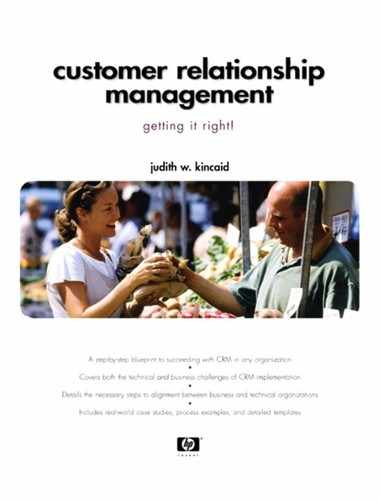Chapter 13. Understanding the Technology Component
The third component of our CRM infrastructure is technology. In Chapter 11, we learned that data, the lifeblood of CRM, must be stable and dependable over time, but tools can be disposable. Had you heard that before? Probably not: software vendors can't make money selling you your own data. In fact, even selling software isn't all that profitable. It's selling customer services and product support that bring in the real money!
Vendors don't want open systems because they want you to be locked into their solution and to depend on them for consulting, long-term support, and future software purchases. Because new tools are released all the time, in the ideal world, the best option for companies implementing CRM is a sharable customer database surrounded by interchangeable, plug-in tools. This is not to say that this option is available today or even easy to accomplish. But unless there is some incentive for the software providers (like CRM practitioners demand it) the situation is unlikely to change.
After you're locked in with a single software product, you can get stuck there. When you buy a new VCR, do you throw away all your old videocassettes? Well, now you don't, but there was a war between VHS and BetaMax when VCRs were first introduced. Consumers voted with their wallets for a standard, not necessarily the best standard, but the one that was most widely used. As CRM software becomes more pervasive, consumers may also have a decision to make. Will we accept all this proprietary software and be ruled by the software vendor, or will we vote for open standards with our wallets so we can choose the best solution for our companies. Only we can force this situation to change.
But for now, what we'll do is to understand how to pick the best technology to match our business needs.
